by Meg Rude, images by Ryan Mason
Two CH-47 Chinook helicopters sit next to the Billings Flying Service (BFS) hanger. The red “billings” letters and white body sharp against the sky. The long, sleek, rotor blades powerful even as they rest over the nose of the the aircraft. It’s another day at Billings Flying Service, and the team is getting to work.
Al Blain stands next to his desk in his office looking out the window at one of the most capable helicopters ever designed. Yet, this impressive aircraft is not really what he is seeing. Rather, Al is actually looking at the men and women on the tarmac standing next to the behemoth. “Our team—they are our most important resource,” he says. “They will truly move heaven and earth when asked.”
Al Blain has come a long way from the days of ferrying spray planes home to Montana. The aircraft, the innovation, the shop, the team of employees, and the impact on the world of aerial firefighting has grown exponentially, yet, one will still find Al and his son Bridger standing on the tarmac with their team, involved in all aspects of bringing an aircraft online and pushing each machine to its potential. While much has changed over the course of the 40-year family business, there is yet a sweet confluence of passion for aviation and business that is, and always has been, the bedrock of Billings Flying Service.
Humble Beginnings
Gerhart Blain was a master pilot and a hard worker. In the 1950’s, he started Blain’s Spray Service, an agricultural aviation business. While spraying crops was a job to put food on the table, Gerhart’s born passion for horse trading and finding a deal filtered into his love for aviation. Over the years, he acquired multiple fixed-wing aircraft and spare parts that accumulated at the family ranch.

As most children of entrepreneurs and passionate hobby-men, all four of Gerhart’s children acquired an interest in aviation. Al and Gary, Gerhart’s two sons, both quickly became expert mechanics, tinkering in the shop, fixing all things from boat motors to small airplanes. Both solo-ed at impressively young ages and obtained their pilot licenses as soon as they met legal age. In the late 1970’s, Gerhart purchased a Hughes 300, and with only a few hours of instruction, taught himself to fly it. Seeing both the adventure and advantage of coyote hunting from the air, the boys learned to fly the small helicopter alongside him. “This was the first helicopter I ever flew,” said Al. While a bit wild at times, the family business was a part of life for the Blains.

“As family members, we all had roles in the business and we knew we had to put in the work for the right outcome,” said Al. By 19 years old, both brothers flew as pilots in the company and were adept at buying aircraft that were in dire need of love and care. From corroded sheet metal and failing engines, Al and Gary put the time in the shop, refurbishing and putting each to work. Very quickly they understood that when one builds a quality machine, there’s a market to sell it, opening doors to the next available aircraft. Buy it, fix it, operate it, sell it—an operational strategy was born.
Making a living as a spray pilot was very difficult, and there was little glamor in the work. “It was a nasty job, but it taught good pitch and power skills,” said Al. The commercial airlines offered a better life, dangling the brass ring. Both Al and Gary pursued this path until, in 1990, Continental Airlines, who employed both Blain brothers, filed for bankruptcy. It was quickly apparent that it was not all it was set up to be, and the fiasco of the commercial airlines at the time forced both Al and Gary back into a spray plane. Back in the shop, the boys were running the business, and they quickly started buying, fixing, and getting the aircraft back to work.
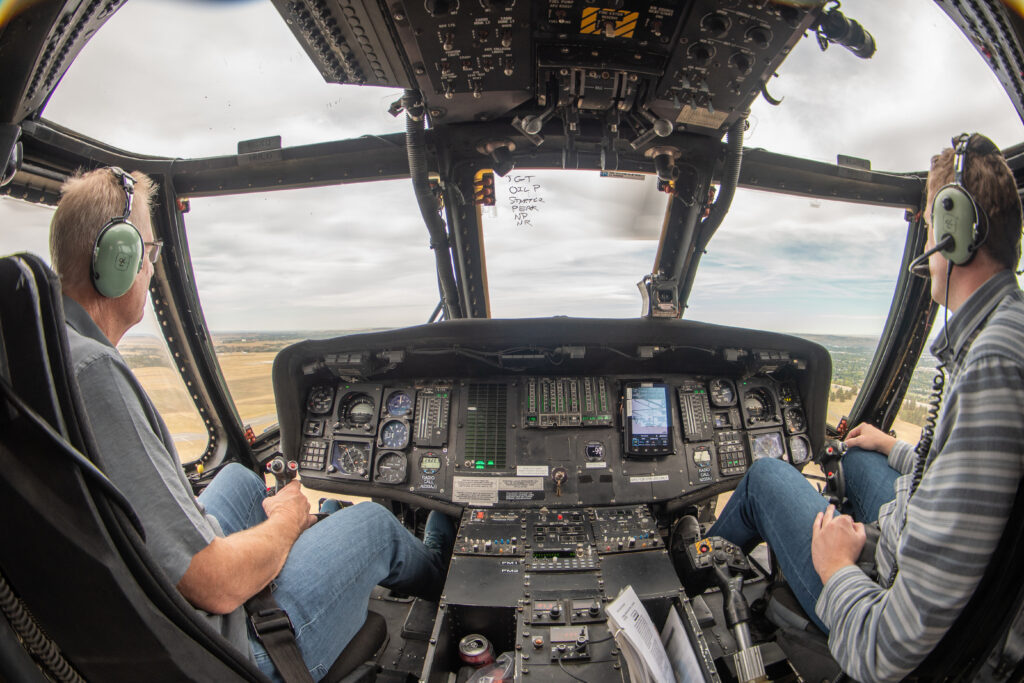
The First Huey
By good fortune, Al and Gary bumped into a Huey that had been sitting nearly abandoned for eight years. Experienced in practical deal-making, they knew the potential sitting before them and landed the deal. The focus of business at this time was still agricultural, but there was energy around the Huey.
In 1997, Billings Flying Service officially stepped into the fire-fighting world. Al and Gary had won a formal call-when-needed contract with the U.S Forest Service (USFS). But calls were slow; they were still spraying fields, fixing small planes, raising small children, and working for the airlines. On July 4th, Al was waterskiing when the phone rang. There was a fire in Florida, and so Al and Ebert Stanton (still Director of Maintenance at BFS today) ferried the Huey to Florida to get to work. Here, in the cockpit of that Huey, dropping water on the fire that burned Florida, with confirmation still in his eye today, Al remembers, “I just knew deeply: This could work!”
“It was exciting and fun,” said Al. “But it was still wild. Gary and I were scheduling shifts opposite each other with the airlines as we traded cockpits. I spent nearly 1000 hours in the air that year, but we didn’t look back.” It was Al, Gary and Ebert, and one Huey. They’ve gotten better and bigger ever since.
A Shift to Aerial Firefighting
The year 2000 solidified the business pivot away from crop dusting. As Al put it, 2000 was “the year Montana burned down. I lived in a helicopter that summer,” he said. After returning from the fires in Florida, the Blain brothers invested all they had, mortgaging houses and throwing every dollar together. They purchased two additional UH-1 helicopters to repair and put to work. Their grit and handwork continued to drive them; they had to make this work. Al and Gary became adept at stocking parts and pieces, acquiring skills, and hiring the right team to rebuild and maintain the engines they needed to operate. It was a natural split then, in 2001, after 9/11, when the airlines were looking to divest pilots, that both Al and Gary made Billings Flying Service their priority.
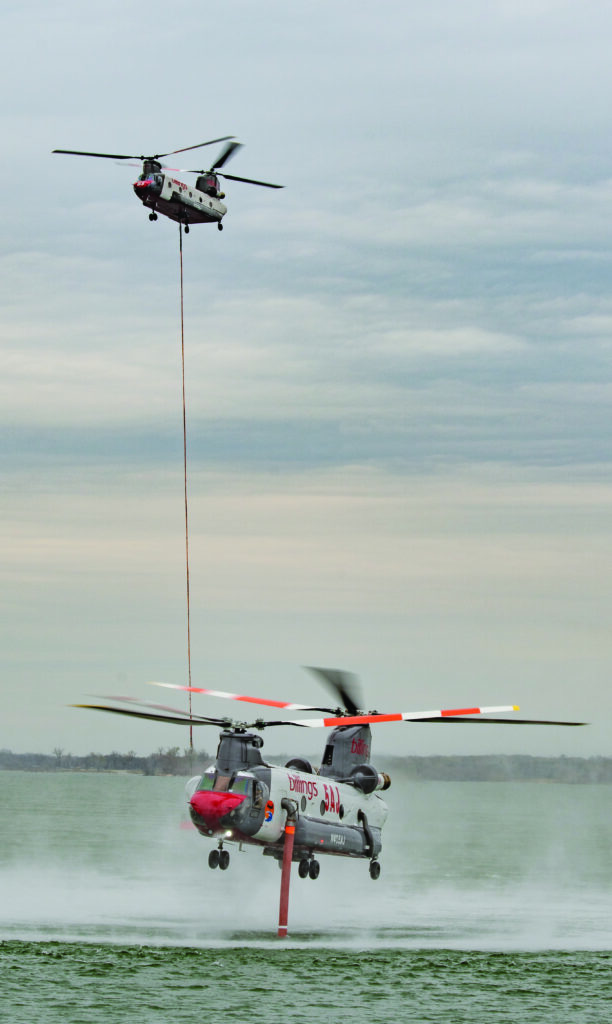
With the Hueys in service, Al was watching Trade-A-Plane and saw two Aerospatiale SA330 Puma aircraft from Aero Asahi become available in Japan. The brothers ended up buying three, and all the spare parts in the world, and, again, got to work. “We had containers full of parts,” said Al. “We went to sleep thinking about helicopters and we woke up thinking about helicopters, and we were continuously building a team of experts around us to help us get where we needed the aircraft to be.” This marked a pivotal time for BFS as this was their entry point into the type 1 aircraft for USFS.
The operational model was successful, and the risk of the investment paid off. Shortly after the SA330 Puma was certified, Presidential Airways /Blackwater requested a contract to take the aircraft on a VertRep for the U.S. Navy, eventually leading to the ultimate sale of the aircraft.
With this new infusion of cash, they immediately went shopping for the next aircraft. They purchased three Sikorsky S-61s. Seeing the great potential, they engaged their growing team. They built an external tank system, fit it with Carson blades, and working with Isolair, they helped certify the external tank mod for aerial firefighting. Once the belly-mounted tank was certified, BFS became the launch customer. Furthermore, having now shifted focus largely from agriculture aviation to the firefighting world and quickly gaining a unique reputation for innovation and operational expertise with their fleet of Hueys, BFS landed multiple seismic contracts, which became a compliment to the aerial firefighting they were becoming known for.
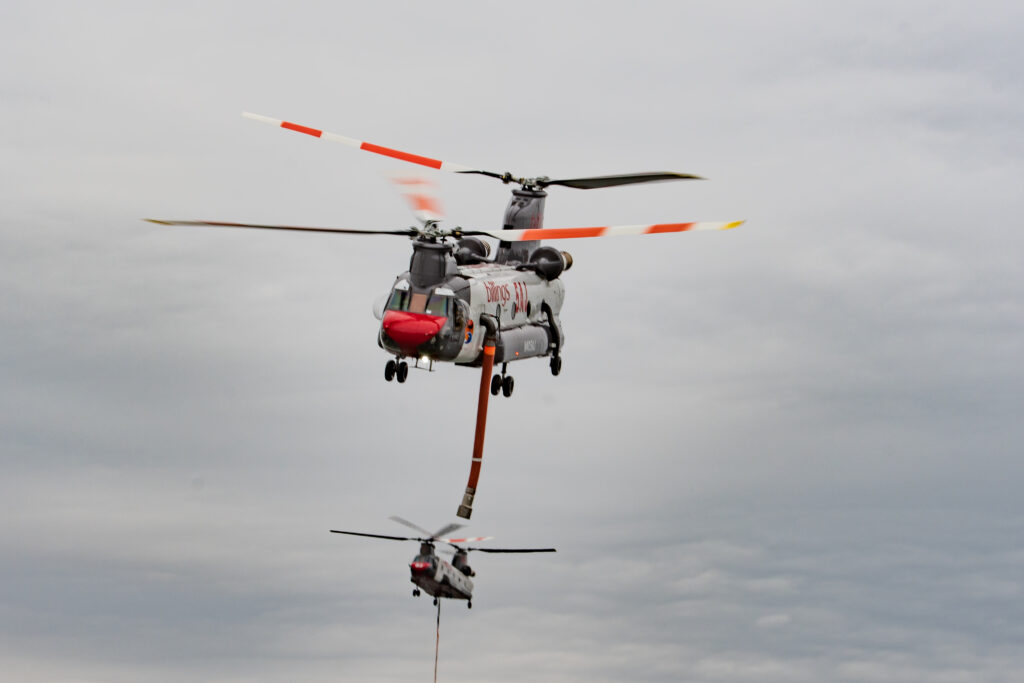
Aviation and Business in their Blood
Entering the world of aviation is contagious in the Blain family. As with Al and Gary, AJ, Erin, and Bridger, all three of Al’s children, inherited the knack and passion for business and aviation. Both AJ and Bridger were immersed in the family business and became involved at a very young age—as mechanics, pilots, and deal makers alongside Al and Gary. When business meetings happen on the car ride to school, it’s easy to learn the business on a molecular level. Just as Al and Gary stepped in when the family business called for them, as soon as age permitted, AJ and Bridger did the same, ferrying parts to job sights after school or shuttling aircraft when needed.
“It’s a fast-paced operation, and you were expected to work hard,” said Bridger. “Regularly I was called to the office at school to receive a note of which aircraft was loaded and ready for me to fly after school. It was just part of life, and I loved the thrill and adventure of it all.”
The family business became a second language—the operating model, the unwavering standards of safety, the understanding of risk and reward, creativity and innovation. The values of handwork and boldness were being passed along. With degrees in finance and engineering complimenting their immersion into the business at birth, the brothers brought much to the table for Billings Flying Service.
In 2013, the world stopped for the Blains and the entire Billings aviation community. Tragedy struck when AJ, Al’s oldest son, was killed in a helicopter crash due to hydraulic failure on the Huey he was piloting during work on a job site. “I was done, and I wanted to hide in a hole,” said Al. Yet, as the aviation world kept moving, a call from Bridger, who was also watching movement on the first release of a military CH-47 Chinook helicopter that was about to be put up for auction by the U.S. government confirmed the intuition Al felt deeply. Again, it was just known: This could work! He and Gary immediately booked seats at the auction, and through devastation and tremendous grief, the need to make this deal work was palpable and breath-stopping. Al and Gary again took every nickel to the bank, sat as underdogs at the auction, and won the bid.

Creating the Culture
Overnight the Billings Flying Service staff grew from ten to fifty employees and has accelerated exponentially ever since. There was an immediate need for a team they could trust, a culture committed to their values, an organizational structure, and a financial strategy that was crucial to making this whole deal work.
Entrepreneurs and business owners know well the phrase “taking a leap of faith.” It’s wildly exciting, and a deal is always a roll of the dice. But building a business takes grit and substantial risk. One has to see the long game. Deciding to take on the challenge of being the first civilian entity to outfit and operate a CH-47 fleet has been no small undertaking for BFS. “You can imagine Kevin Costner standing in the field; it’s all glorious in the movie, but the reality is it’s a bit intense when you’re doing it. You have to believe in and love what you do,” said Al.

It has been a monumental task to get to where they are today. “We believe in our team, and we take care of them, they take care of us, and we’re working towards more creative solutions,” Al said. “We don’t have the ability like larger companies to go out and buy everything we need; we’ve had to do everything creatively.” He continues, explaining that, “by caring for our people, they take care of us. And they’re in that success with us…All these areas touch each other, whether it’s parts engineering, MRO, maintenance, or the financial side of it. Everything has to play together.”
Innovation and Growth
February 2014: With two army green Chinooks sitting in the hanger, and no callbacks from Boeing, “we knew immediately we needed to be self-sufficient,” Al explained. These were after-market aircraft, and the lead time on parts for the CH-47 exceeded five years. Al and Gary secured outside capital to purchase a total of eight airframes that would allow the BFS staff to harvest parts to get the two primary CH-47 aircraft airworthy. It was again time to get to work. “Sometimes it gets overplayed to say people have a team mentality at a company, but we believe in our team,” said Al. “To make [our model of creativity and innovation] successful, we have to operate efficiently, but we have to maintain a higher level of safety at a low price point. So, by caring for our people, they take care of us, and they’re in that success with us.”

The first Ch-47 Chinook aircraft was put to work in 2015 and began generating income. Simply operating the aircraft and picking up and dropping water didn’t capture the vision the Blains had for the CH-47. It became quickly apparent that they needed an internal tank to maximize firefighting capabilities with this aircraft. They partnered with Kawak Aviation for their hydraulic expertise, and together designed and outfitted the aircraft with a hydraulic driven snorkel pump with capabilities of filling a 2,500 gallon internal tank in forty seconds. Refining their vision, they spent countless hours and invested greatly in computer modeling that fashioned the drop pattern of the water out of the tank to ensure the pattern was as laminar and smooth as possible to provide maximum coverage on the fire. The new tank system allowed for precise drop patterns and rates far superior to the capabilities of other aircraft in the industry. This innovation is stunning; a design heads and tails above the competition.
The CH-47D Chinook is the most capable firefighting asset available today. It is a highly complex and competitive market. While still in active use by militaries around the world and with several operators in the industry seeing this capability and attempting to bolster their fleets, sourcing new aircraft for BFS can be daunting. Therefore, when the Netherlands put six Chinook helicopters up for auction in 2023, Bridger Blain, now president of the company, jumped on the opportunity. “We bid aggressively, and we won all six aircraft,” he said. “We are hugely excited to incorporate these aircraft into our fleet.”
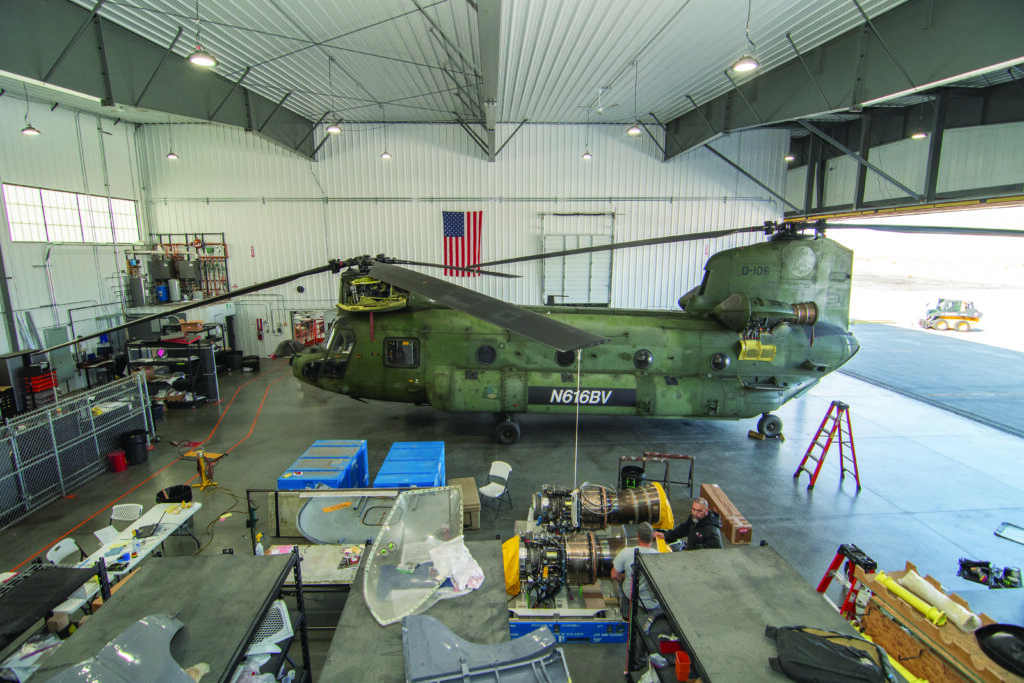
Eating, sleeping, and breathing the CH-47, Al, and Bridger consider daily every detail and every way they can do it better. They trusted their team, and eventually brought all aspects of maintenance (excluding OEM part building) in-house. BFS now hosts an impressive footprint west of Billings-Logan International Airport, including company headquarters, four extensive maintenance facilities, and a state-of-the-art aviation complex. BFS is now able to service everything from routine maintenance to hydraulics, AFCS, and transmissions; a world-class avionics shop and overhaul facilities provide much of the supply chain to keep the ever-growing CH-47 fleet in the air, lending support to outside vendors, FMS operators, and now, opening the door to land the deal in the Netherlands.
Nearly a year and a half after winning the bid in the Netherlands, Bridger states, “We finally see the fruits of our labor.” In September of 2023, the first of the Netherlands-purchased Chinooks was able to reach its hover check capability, a milestone as the new aircraft are brought online for BFS. While the fleet of Chinooks is not complete, true to the business over the years, aircraft come and go. “The number of airframes fluctuates, but at present, we are beyond excited to incorporate the new Chinooks into the fleet and our operations,” said Bridger.
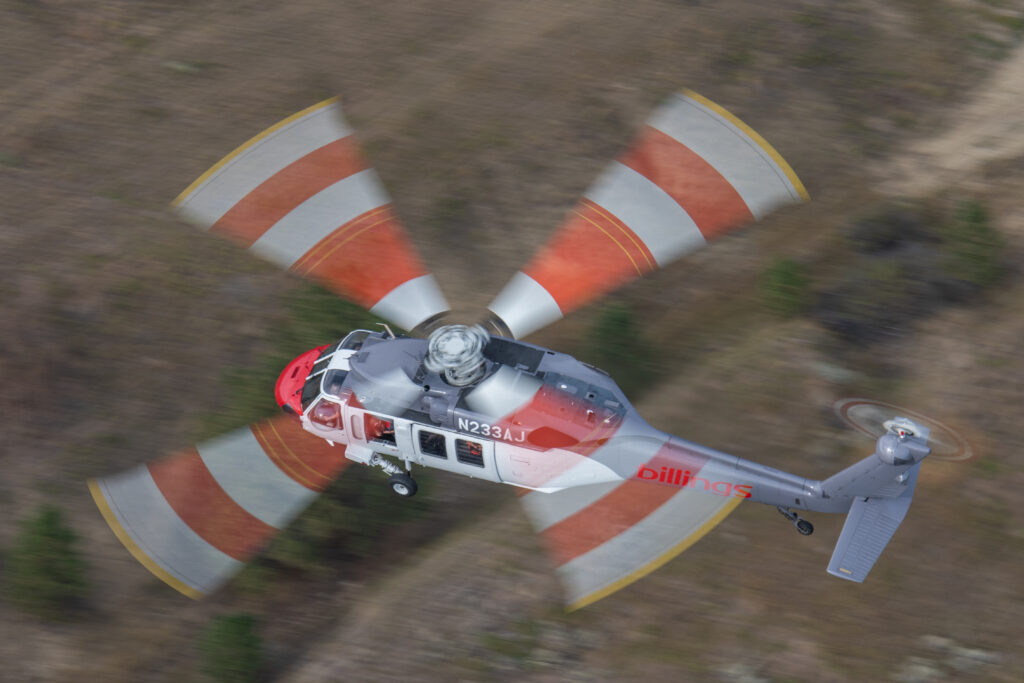
The Future
When one walks down the hall of the company offices, beautiful photos narrate the journey from the Hughes 300 to the impressive fleet of the strongest and most capable aircraft in the world. Al still has a glimmer of mischief in his eye, as though he got away with something at the initial Chinook auction. “They didn’t even know our name,” he said laughing.
The fleet has grown to 12 Chinooks. BFS employs the best people in the world—tackling heavy lift operations, aerial firefighting, and accepting any challenge from construction to the most devastating fires. As the first company to operate a fleet of Chinooks in Canada, BFS expertly operates and provides services around the world and is always on the hunt for new opportunities.
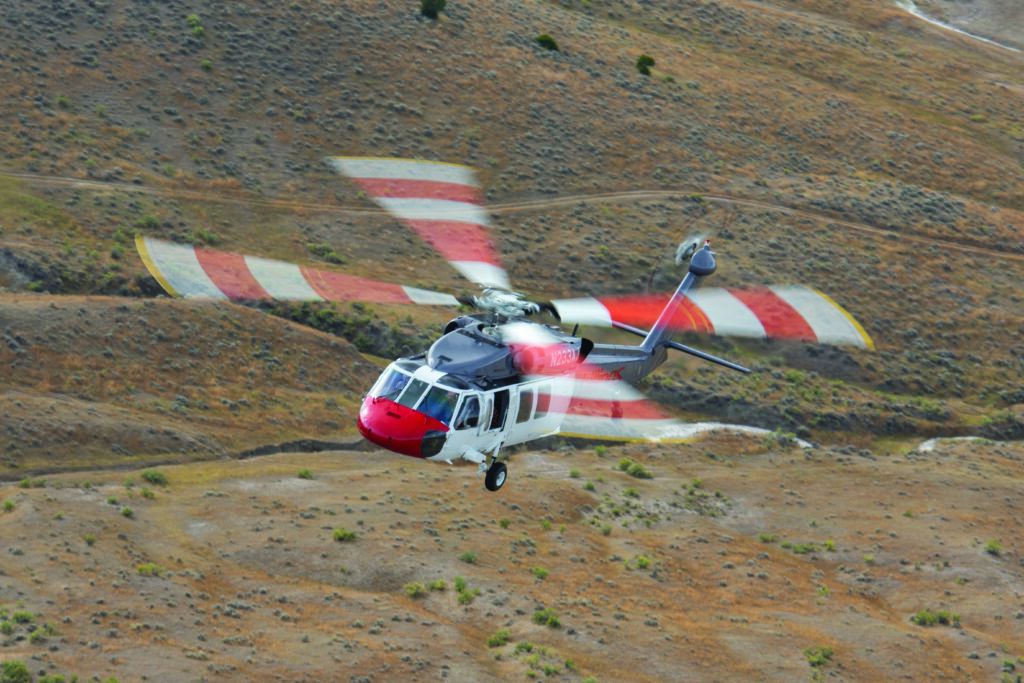
From humble Montana ranching roots, corroded fixed-wing aircraft that offered thrilling views through the floor, and a once crop-dusting focus, today Billings Flying Service is one of the most competitive aerial firefighting companies and heavy lift operators in the world. And as generational businesses naturally do, the company has seen multiple transitions from Gerhart to Al and Gary, and as Gary has pursued other ventures, to Al and Bridger. And now, as the third generation, Al has naturally handed the baton over to Bridger.
While the Billings Flying Service of today, employing over 175 dedicated experts in their fields and the largest civilian fleet of CH-47s in the world, has come a long way from dusting crops and trading small airplanes, the company holds the same roots and passion for aviation and innovation. There is always a deal to be had and a better product to create. The language of a family company becomes ingrained. While Al Blain has no plans of stepping away while still having fun, working alongside Bridger is a highlight as they continue innovating and enhancing the aerial firefighting industry and heavy lift operations. Both Al and Bridger continue to challenge the status quo to bring new ideas to fruition—whether negotiating multi-million dollar purchases and sales or jumping in the cockpit to ferry a small aircraft to a job site, they are still ready to step in wherever needed for a successful outcome.
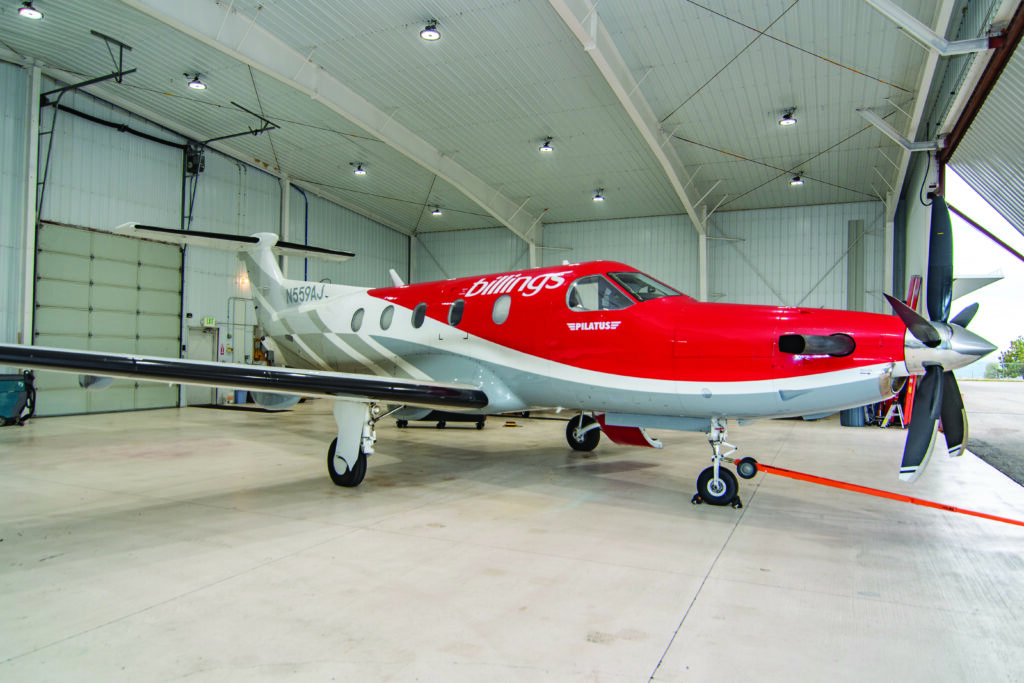
“The only way we are able to keep that creativity is to maintain the passion for aviation. And our people see that and they too maintain their passion for aviation,” says Al proudly.
While Al can laugh at the memory of hanging from the window of a Hughes 300, chasing coyotes and learning to fly a helicopter at the same time, the glimmer of adventure is still in his eyes, displaying the hard work, grit, and boldness passed through the generations.


